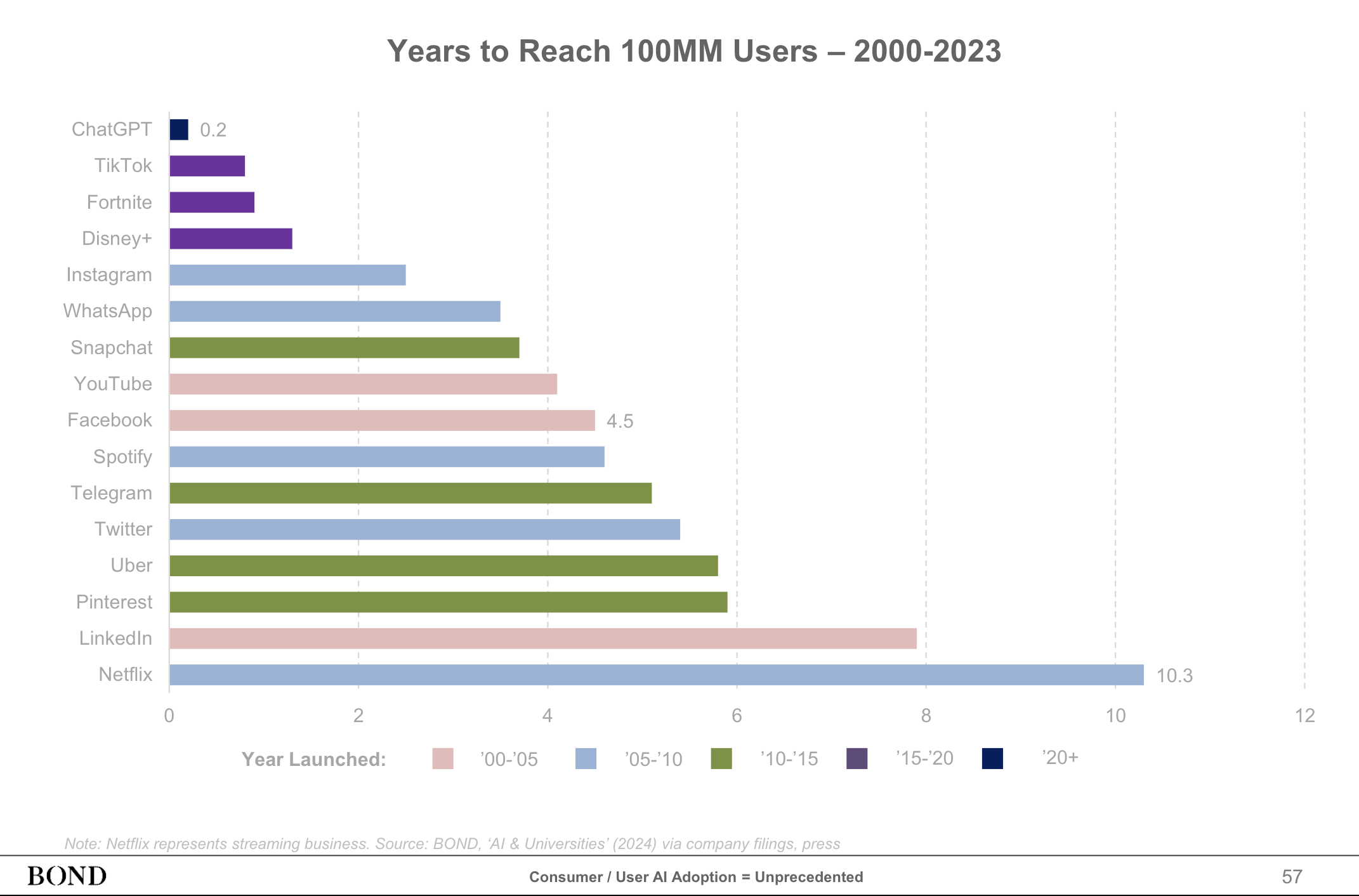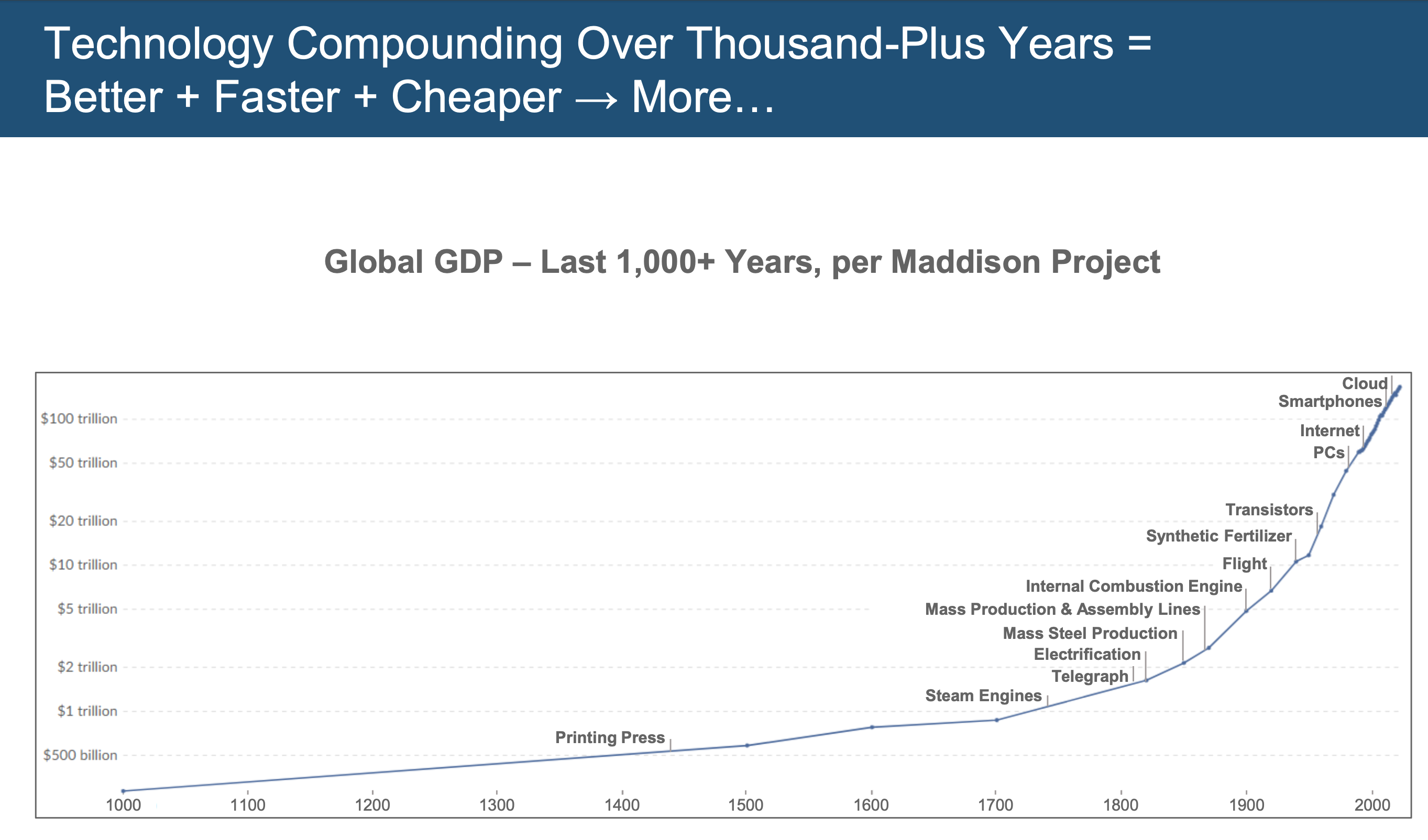BOND-Artificial Intelligence#1 | 매거진에 참여하세요
BOND-Artificial Intelligence#1
#BOND #AI #Trend #Speed #Internet #Growth #Report #Part1
Why AI Is Spreading 8x Faster Than the Internet
Based on insights from BOND's 2025 AI Trend Report
If it feels like AI is taking over the world faster than anything before it—you’re not wrong.
The numbers say it all: ChatGPT reached 1 million users in 5 days. It surpassed 100 million in just two months.
For comparison, TikTok took 9 months, Instagram more than two years.
So what makes AI’s growth so exponential—and so unlike anything we’ve seen before?
According to BOND’s 2025 AI Trend Report, the answer lies in the intersection of technological maturity, global infrastructure, and human behavior. Let’s break down why AI isn’t just another fast-growing tech, but a fundamentally different kind of revolution.
BOND has been consistently publishing insightful reports over the years. If you have time, I highly recommend checking out the original documents through the links below.
Year | Report Title | Release Date | Link | Description |
|---|---|---|---|---|
2025 | Trends – Artificial Intelligence | May 2025 | Analyzes the rapid spread of AI technologies, global market shifts, technical advancements, and investment trends. | |
2025 | USA Inc. | March 2025 | Examines how U.S. companies are adopting and expanding AI-related technologies. | |
2024 | AI & Universities | July 2024 | Explores how AI is being integrated into education and how universities are adapting to this shift. | |
2020 | Our New World | April 2020 | Discusses the societal, economic, and policy implications of AI and other emerging technologies. |
AI Has Become Intuitively Embedded in Our Lives
There was a time when “AI” sounded like something only scientists talked about.
But today, the term is not only familiar—it’s personal.
We use AI to write emails, summarize reports, generate images, and even brainstorm business ideas.
The big shift happened in late 2022, when ChatGPT was released. For the first time,
people could talk to AI like a person, and the experience felt… natural.

That interface shift changed everything.
Three Reasons AI Is Spreading at Internet-Crushing Speed
1. A Fully-Built Global Infrastructure Was Already in Place
AI didn’t need to build its own runway. By the time tools like ChatGPT launched, they had access to:
- Cloud computing (AWS, Azure, GCP)
- Global broadband networks
- App stores and web platforms
- Billions of smartphones and laptops
Unlike early internet services, which had to climb uphill through modem speeds and hardware limits, AI could scale instantly using the backbone already laid by two decades of digital growth.
2. Dead-Simple UX and Frictionless Access
You don’t need a tutorial to use ChatGPT.
No downloads, no training, no tech background required. Just type—and AI talks back.
This ease of use lowered barriers dramatically. As BOND puts it, “AI is accessible by design.”
That accessibility has become its most powerful growth engine.
3. AI Produces Useful Output Immediately
The first time people used AI, it did something useful—summarized an article, wrote an email, debugged code.
It wasn’t just cool, it was practically helpful.
That feedback loop created a flywheel effect: the more you used it, the more value it returned.
The more value it returned, the more it became embedded in your daily life.
From Curve to Explosion: The Exponential Nature of AI Adoption
Most technologies follow the classic S-curve adoption: slow start, fast growth, eventual plateau.
But AI isn’t following that path. It’s accelerating faster than predicted because its rate of adoption is itself increasing exponentially.
Each new tool builds on a bigger base, with faster dissemination.
"If the internet was a wave, AI is a tidal surge—riding on top of it, moving 8x faster."
— BOND 2025 AI Report

In other words, AI isn’t just spreading. It’s compounding.
What’s Really Driving This Speed?
It’s not just the tech—it’s the environment.
People are already used to on-demand software.
Cloud-native delivery makes updates instantaneous.
Global communities now share tools, use cases, and prompts in real time.
All of this creates a network effect far beyond what the early internet had.
So What Does This Mean?
AI's rapid rise is no longer a surprise—it’s a new standard.
The important takeaway is not how fast it got here, but how ready we are for what comes next.
We're not just watching history unfold. We're building into it.
And this is only the beginning.






